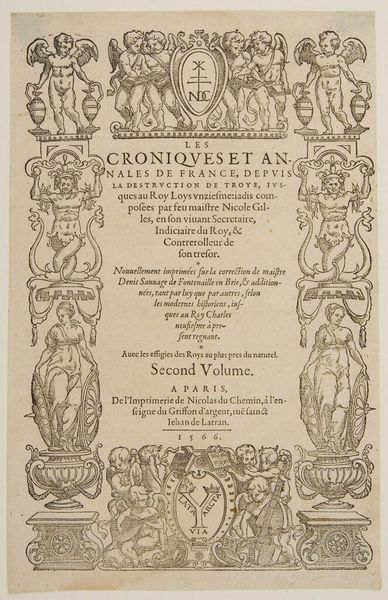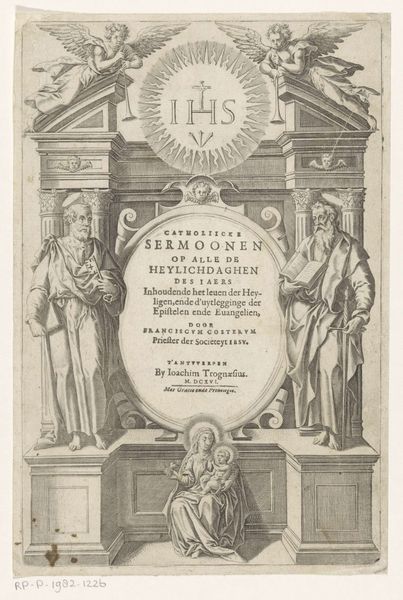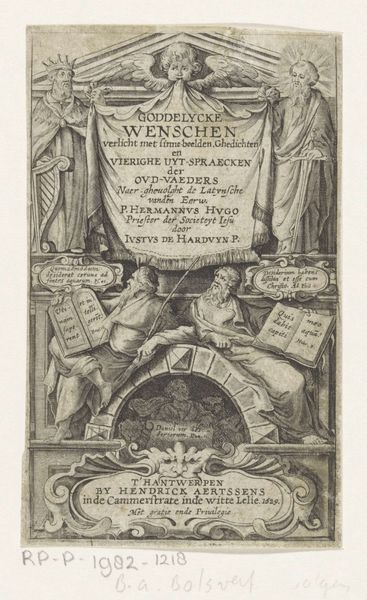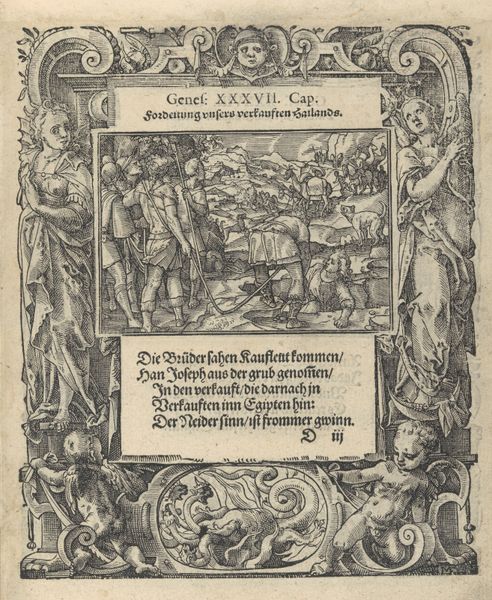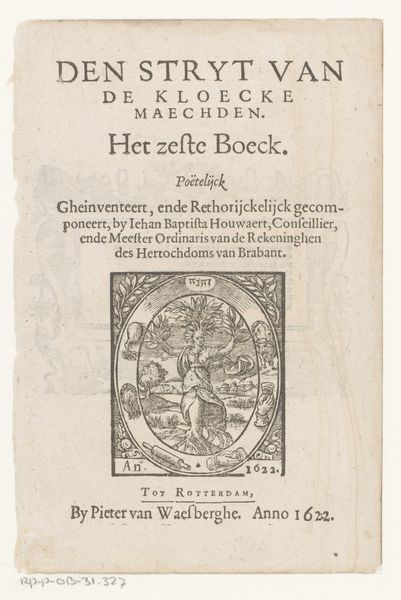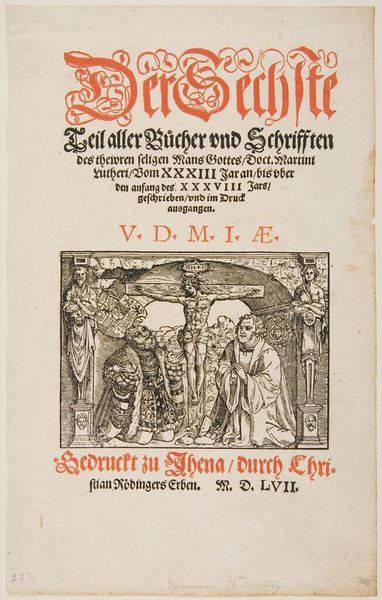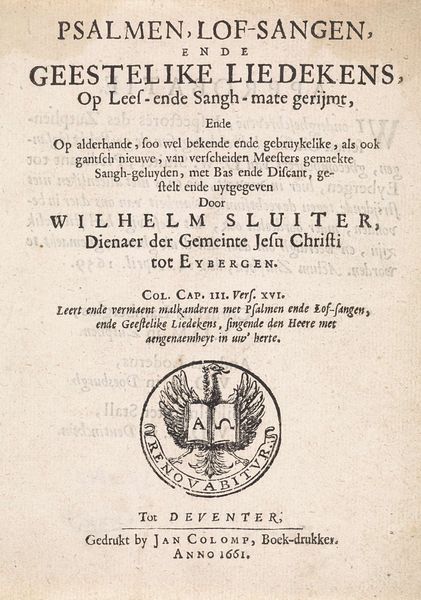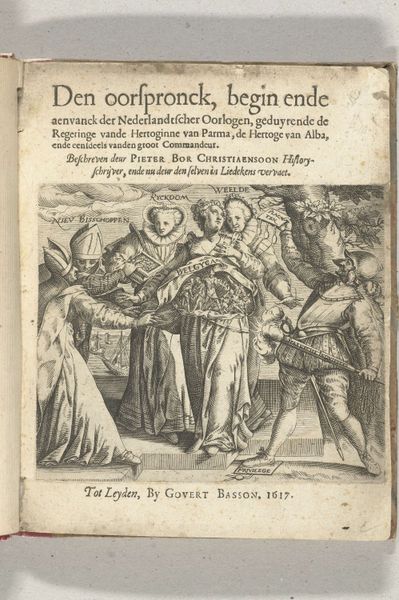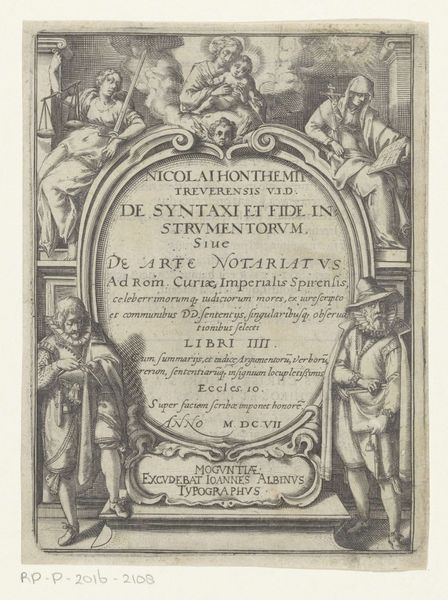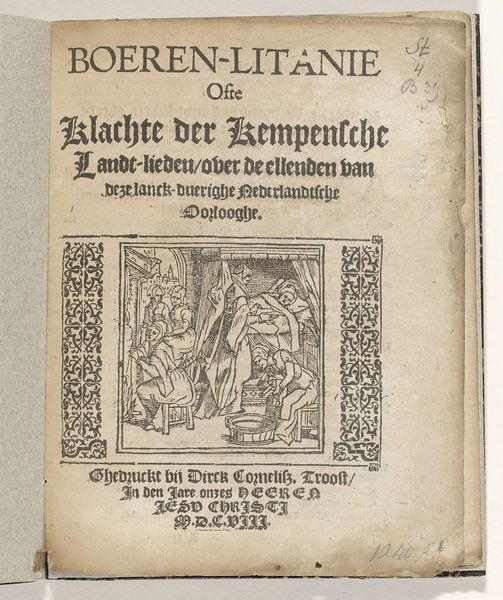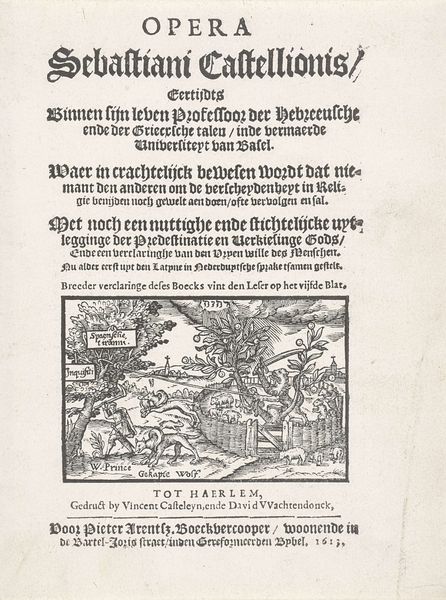
graphic-art, print, paper, ink, engraving
#
graphic-art
# print
#
paper
#
11_renaissance
#
ink
#
pen-ink sketch
#
engraving
Dimensions: height 282 mm, width 172 mm
Copyright: Rijks Museum: Open Domain
Curator: Welcome. We’re standing before the title page from Mathias Lambrecht’s “Historia Ecclesiastica,” printed in 1609. It's a beautiful engraving. Editor: It’s striking! The dense text framed by those almost architectural elements…it feels incredibly formal and ornate. The saints in those little corner vignettes look so calm amidst all the busyness. Curator: It’s a testament to the printing process of the era. The fine lines and intricate details achieved with engraving demonstrate remarkable skill and labour. Consider the number of impressions made from this plate; it speaks to the consumption of religious texts at the time. Editor: Absolutely. The title itself, "Historia Ecclesiastica," signals its purpose: to disseminate a very specific, officially sanctioned history. Note how the design reinforces hierarchical power. The IHS Christogram dominates the composition, visually asserting the Church’s authority. Mathias Lambrecht, identified prominently as Bishop of Bruges. That context shapes its meaning. Curator: Indeed. And think of the paper, the ink, the press itself – each a commodity, each part of a network that allowed this religious and historical narrative to circulate. It represents a complex interplay between the artisanal craft of printmaking and the religious doctrine. We're not just seeing an image, we are witnessing the convergence of materials, labor, and the apparatus of religious institutions. Editor: And the decision to frame the central text with the Evangelists; Matthew, Mark, Luke and John alongside Peter and Paul anchors the Church's story to these key figures. What kind of workshops produced such images, and how were these craftspeople instructed to create these visual expressions of faith? How did social structures impact its visual message? Curator: Those are vital questions, drawing attention to the intersection of art, industry, and social control at that historical moment. This isn't simply a religious image; it's a manufactured object, a carefully constructed message disseminated through specific material means. Editor: Exactly. Analyzing the image as an historical artifact also allows us to consider how viewers across centuries would interact with and interpret the symbolism embedded within the title page based on the changing historical climate. It's always situated. Curator: A valuable reminder to consider the conditions of creation and consumption in equal measure. Editor: Yes, leaving me pondering how seemingly devout images have always had complicated entanglements with commercial life and worldly power.
Comments
No comments
Be the first to comment and join the conversation on the ultimate creative platform.
